- Home
- Blog
- Data Science
- Programming Languages For Data Science

- Big Data Vs Data Science Vs Data Analytics
- Data Science Interview Questions
- Top Data Science Tools
- Data Science Tutorial
- Data Science with R Interview Questions
- Overview of Data Modeling for Unstructured Data in Data Science
- What is Data Scientist?
- What is Data Visualization?
- Data Cleansing
- What is Data Science
- What is Data Analytics?
- Job Roles For A Data Science Enthusiast
- RapidMiner Tutorial - Introduction To RapidMiner
- Top 12 Data Science Resources
- Data Scientist Interview Questions
- MATLAB Interview Questions
- Data Engineer Interview Questions
- Data Visualization Interview Questions
- Toughest Courses in India
- Data Mining vs Data Science
- Data Scientist Job Description
Since data science is still a rapidly evolving field, it is in high demand and pays well. However, getting started in the data science industry can be difficult for anyone. Whatever path you take in data science, programming abilities are essential.
Do you want to go into data science but aren't sure which programming language to use? Here's all you need to know about the programming languages that will be at the forefront of the data science industry in 2022.
| Table of Content - Programming Languages For Data Science |
|
➤ What is the Role of a Data Scientist? ➤ Why should you pursue a career as a Data Scientist? |
What is Data Science?

Data science remains one of the most in-demand and promising career opportunities for qualified people. Effective data professionals of today recognize that they must go beyond the traditional abilities of programming, data mining, and large-scale data analysis.
Data scientists must understand the entire data science life cycle and possess a level of awareness and flexibility to maximize returns at every stage of the process to uncover meaningful intelligence for their business organizations.
| If you want to enrich your career and become a professional in Data Science, then enroll in "Data Science Online Training" - This course will help you to achieve excellence in this domain. |
What is the Role of a Data Scientist?
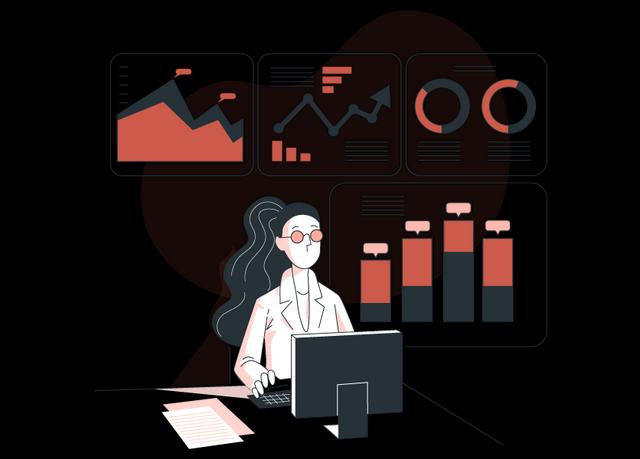
A Data Scientist is in charge of analyzing, gathering, and interpreting huge amounts of data. Mathematicians, statisticians, scientists, and computer professionals are all examples of traditional technical job role that have progressed to become data scientists. Technologies for advanced analytics., such as predictive modeling and machine learning are required for this occupation.
To make inferences, build hypotheses, and analyze consumer and market trends, a data scientist needs a large amount of data. Collecting and analyzing data, as well as employing various forms of reporting and analytical tools for pattern recognition, linkages, and trends in data sets, are all basic duties.
Data scientists in the business world usually work in teams to mine the massive amount of data for information that can be used to forecast customer behavior and find new sources of revenue. Many companies have data scientists in charge of building best practices for data collection, analysis, and interpretation.
Data science abilities are in higher demand than ever before as businesses are attempting to extract useful information from big data, which refers to the huge amount of structured, unstructured, and semi-structured data that a large corporation or the internet of things generates and collects.
| Related Article: Data Science Tutorial for Beginner |
Why should you pursue a career as a data scientist?

Learning data science can lead to a successful career with a wide range of job possibilities. The demand for data scientists has risen dramatically in recent years and is expected to continue to rise, making now an excellent moment to start your career as a data scientist.
If you're looking for a high-paying profession, data science is the appropriate option for you. The average data scientist in the United States earns $113k per year, which is significantly higher than the national average. It's also significantly greater than the average compensation for a data analyst.
What is the best way to get started in data science?
Although a four-year degree is not required for data science, it is nevertheless vital to become well-versed in the discipline, particularly in large data and arithmetic. Learning one or more programming languages used in the sector is the best approach to accomplish this.
So, which programming languages are required for data science? What are the best languages to learn if you want to work as a data scientist? We're going to go over all of the many possibilities you should consider.
| Related Article: Data Science Interview Questions for Freshers |
Top Programming Languages for Data Science
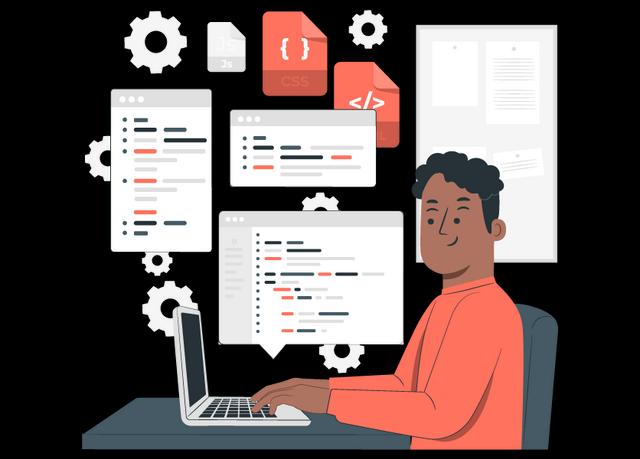
If you're thinking about pursuing a career in data science, the sooner you start coding, the better. For any aspiring data scientist, learning to code is a must. Getting started with programming, on the other hand, can be intimidating, especially if you have no prior coding knowledge.
To choose the best programming language for data scientists, we must first consider what they perform on a daily basis. A data scientist is a technical expert who manipulates, analyses, and extracts information from data using mathematical and statistical approaches.
Machine learning and deep learning, as well as network analysis, natural language processing, and geographic analysis, are all areas of data science. Data scientists rely on the computing power of computers to complete their tasks. Programming is a method for data scientists to interface with computers and delivers commands to them.
There are hundreds of programming languages available, each designed for a certain purpose. Some are better suited to data science, with great productivity and performance for processing massive amounts of data. However, a sizable number of programming languages remain in this group.
We'll take a look at some of the most popular data science programming languages for 2022, as well as their respective strengths and limitations.
| Related Article: Data Science with R Interview Questions for Experienced |
Python
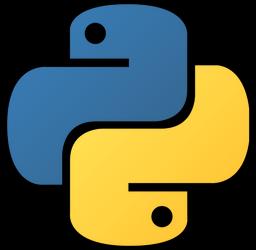 Python can handle every data science problem you can think of. This is largely due to its diverse library ecosystem. Python can execute a wide range of tasks, from data preprocessing, visualization, and statistical analysis to the deployment of machine learning and deep learning models, thanks to dozens of sophisticated packages and a large user community.
Python can handle every data science problem you can think of. This is largely due to its diverse library ecosystem. Python can execute a wide range of tasks, from data preprocessing, visualization, and statistical analysis to the deployment of machine learning and deep learning models, thanks to dozens of sophisticated packages and a large user community.
The following are some of the most popular data science and machine learning libraries:
- NumPy is a popular Python library that includes a large number of complex mathematical functions. Numpy objects, such as the well-known NumPy arrays, are used in many packages.
- pandas is a significant library in data science that can be used to manipulate databases in a variety of ways. It's also known as DataFrames.
- Matplotlib is a standard Python data visualization package.
- Scikit-learn is the most popular Python toolkit for constructing machine learning algorithms, built on top of NumPy and SciPy.
- TensorFlow is a strong computational framework for constructing machine learning and deep learning algorithms, developed by Google.
- Keras is an open-source library for high-performance neural network training.
| If you want to enrich your career and become a professional in Python, then enroll in "Python Certification Training" - This course will help you to achieve excellence in this domain. |
Python is sometimes touted as one of the easiest programming languages to learn and use for novices due to its simple and legible syntax. Python is one of the greatest possibilities if you're new to data science and don't know which language to learn first.
R
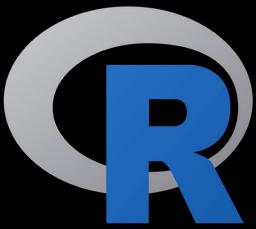 R is a top choice for budding data scientists, despite not being as popular as Python according to popularity indices. Learning one of these two languages, which is sometimes depicted in data science forums as Python's main opponent, is a vital step in breaking into the field.
R is a top choice for budding data scientists, despite not being as popular as Python according to popularity indices. Learning one of these two languages, which is sometimes depicted in data science forums as Python's main opponent, is a vital step in breaking into the field.
R is an open-source, domain-specific programming language that was created specifically for data science. R is a great language for data manipulation, processing, and visualization, as well as statistical computing and machine learning. It's quite popular in finance and academia.
R, like Python, has a broad user base and a large library of specialized data analysis libraries. Some of the most well-known is part of the Tidyverse family of data science packages.
| If you want to enrich your career and become a professional in R, then enroll in "R Programming Online Training" - This course will help you to achieve excellence in this domain. |
It includes the powerful ggplot2 standard library for data visualization in R, as well as dplyr for data processing. When it comes to machine learning jobs, libraries like caret will make designing algorithms a lot easier.
Although working with R straight on the command line is possible, most people prefer to use Rstudio, a robust third-party interface that includes features like a data editor, data viewer, and debugger. R is a great language to learn if you're new to data science or want to expand your linguistic horizons.
SQL
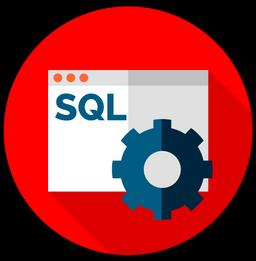 Databases house a large portion of the world's data. SQL (Structured Query Language) is a domain-specific language that allows programmers to interact with databases, change data, and extract data. If you want to work as a data scientist, you'll need to know how to work with databases and SQL.
Databases house a large portion of the world's data. SQL (Structured Query Language) is a domain-specific language that allows programmers to interact with databases, change data, and extract data. If you want to work as a data scientist, you'll need to know how to work with databases and SQL.
| If you want to enrich your career and become a professional in SQL, then enroll in "SQL Online Training" - This course will help you to achieve excellence in this domain. |
You'll be able to deal with a variety of relational databases if you know SQL, including popular systems like SQLite, MySQL, and PostgreSQL. Despite minor changes, the underlying query syntax for these relational databases is quite similar, making SQL a remarkably adaptable language.
Whether you begin your data science adventure with Python or R, you should also consider studying SQL. SQL is quite easy to learn compared to other languages because of its declarative, straightforward syntax, and it will aid you a lot along the road.
Java
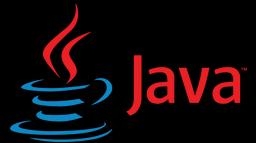 Java is one of the most popular programming languages in the world, ranking #2 in the PYPL Index and #3 in the TIOBE Index. It's an object-oriented programming language that's open-source and well-known for its speed and efficiency. The Java ecosystem supports a wide range of technologies, software applications, and websites.
Java is one of the most popular programming languages in the world, ranking #2 in the PYPL Index and #3 in the TIOBE Index. It's an object-oriented programming language that's open-source and well-known for its speed and efficiency. The Java ecosystem supports a wide range of technologies, software applications, and websites.
| If you want to enrich your career and become a professional in Java, then enroll in "Java Training Course" - This course will help you to achieve excellence in this domain. |
Although Java remains the primary language for designing websites and applications from the ground up, it has recently acquired prominence in the data science business. The Java Virtual Machines, which provide a robust and efficient framework for popular big data technologies like Hadoop, Spark, and Scala, are largely responsible for this.
Java is a great language for constructing ETL processes and performing data tasks that demand large storage and complicated processing requirements, such as machine learning techniques, due to its excellent performance.
Julia
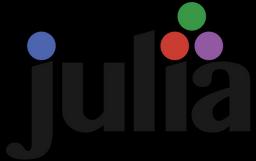 Julia is a rising star in the field of data science. Julia, despite being one of the newest languages on this list (it was published in 2011), has already made an impression on the numerical computing community. Julia, also known as the Python inheritor, is a powerful data analysis tool when compared to other programming languages.
Julia is a rising star in the field of data science. Julia, despite being one of the newest languages on this list (it was published in 2011), has already made an impression on the numerical computing community. Julia, also known as the Python inheritor, is a powerful data analysis tool when compared to other programming languages.
| If you want to enrich your career and become a professional in Julia, then enroll in "Julia Training Certification" - This course will help you to achieve excellence in this domain. |
Julia has garnered recognition as a result of its early adoption by a number of large firms, including many in the financial sector, but it currently lacks the maturity to compete with the best data science languages. It still has a tiny user base and fewer libraries than its primary competitors, Python and R.
The biggest disadvantage of Julia is its youth, yet there are several reasons to keep a watch on it. Let's watch how it develops over the next few years.
Scala
 Although Scala does not frequently appear in top programming language rankings (it is ranked #18 in the PYPL Index and #33 in TIOBE), it is necessary to discuss this programming language in the context of data science.
Although Scala does not frequently appear in top programming language rankings (it is ranked #18 in the PYPL Index and #33 in TIOBE), it is necessary to discuss this programming language in the context of data science.
Scala has recently established itself as one of the most powerful languages for machine learning and large data. Scala is a multi-paradigmatic language that was released in 2004 with the specific goal of becoming a clearer and less wordy alternative to Java.
| If you want to enrich your career and become a professional in Scala, then enroll in "Scala Online Training" - This course will help you to achieve excellence in this domain. |
Scala also runs on the Java Virtual Machine, enabling Java interoperability and making it ideal for distributed big data projects. The Apache Spark cluster computing framework, for example, is written in Scala.
C/C++
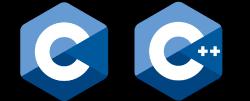 Being familiar with C and its near relative C++, two of the most efficient languages can be quite handy when it comes to handling computationally heavy data science assignments.
Being familiar with C and its near relative C++, two of the most efficient languages can be quite handy when it comes to handling computationally heavy data science assignments.
Because C and C++ are faster than other programming languages, they are ideal candidates for developing big data and machine learning applications. Some of the key components of popular machine learning libraries, such as PyTorch and TensorFlow, are developed in C++, which is no coincidence.
C and C++ are among the most difficult languages to learn due to their low-level nature. As a result, while they may not be your first option when entering the realm of data science, learning them once you've mastered the fundamentals of programming is a wise step that may make a big difference on your CV.
JavaScript
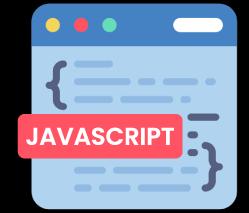 According to the Stack Overflow Developer Survey 2021, JavaScript is the most popular programming language. JavaScript is a multiparadigm, adaptable programming language that is well-known for its ability to create rich, dynamic web pages.
According to the Stack Overflow Developer Survey 2021, JavaScript is the most popular programming language. JavaScript is a multiparadigm, adaptable programming language that is well-known for its ability to create rich, dynamic web pages.
Although the bulk of JavaScript users works in web development, the language has gained popularity in the data science business in recent years. JavaScript now supports prominent machine learning and deep learning libraries, such as TensorFlow and Keras, as well as highly sophisticated visualization tools, such as D3.
It's a smooth entry option for all front-end and back-end programmers who wish to break into data science, thanks to the support of prominent machine learning frameworks and its widespread appeal among web developers.
Swift
 One disadvantage of Python and R is that they were not designed with mobile devices in mind. We can anticipate even more advancements in mobile, wearables, and IoT in the next years (Internet of Things).
One disadvantage of Python and R is that they were not designed with mobile devices in mind. We can anticipate even more advancements in mobile, wearables, and IoT in the next years (Internet of Things).
Apple created Swift to make it easier to create apps and, as a result, to expand its app ecosystem and enhance client retention. Soon after its release in 2014, Apple and Google began collaborating to make it a significant tool in the mobile-machine learning interplay.
TensorFlow is now compatible with Swift, and Python is now interoperable. Swift also has the advantage of no longer being restricted to the iOS ecosystem, as it has gone open-source and can now be used on Linux.
As a result, if you're a mobile developer with an interest in data science, Swift is the language for you.
Go
 Go (or GoLang) is a popular programming language, particularly for machine learning projects. It was first released by Google in 2009, with C-like syntax and layouts. Many developers consider Go to be the 21st-century counterpart of C.
Go (or GoLang) is a popular programming language, particularly for machine learning projects. It was first released by Google in 2009, with C-like syntax and layouts. Many developers consider Go to be the 21st-century counterpart of C.
| If you want to enrich your career and become a professional in Go, then enroll in "Go Online Training" - This course will help you to achieve excellence in this domain. |
Go is becoming highly popular more than a decade after its inception, because of its versatile and easy-to-understand language. Go can be a useful ally for machine learning problems in the context of data science. Despite its potential, Go's data science community remains modest.
MATLAB
 MATLAB is a programming language that is mostly used for numerical computations. Since its introduction in 1984, MATLAB has been widely used in academia and scientific research, providing powerful capabilities for performing complex mathematical and statistical operations, making it an excellent contender for data science.
MATLAB is a programming language that is mostly used for numerical computations. Since its introduction in 1984, MATLAB has been widely used in academia and scientific research, providing powerful capabilities for performing complex mathematical and statistical operations, making it an excellent contender for data science.
MATLAB, on the other hand, has a significant drawback: it is proprietary. You may have to pay a considerable sum of money to obtain a license, depending on the situation (academic, personal, or business use), making it less appealing than alternative programming languages that may be used for free.
SAS
 SAS (Statistical Analytical System) is a corporate intelligence and advanced numerical computing software environment. SAS has been around for a long time and is widely used by major corporations in a variety of industries, generating a large market for SAS developers.
SAS (Statistical Analytical System) is a corporate intelligence and advanced numerical computing software environment. SAS has been around for a long time and is widely used by major corporations in a variety of industries, generating a large market for SAS developers.
SAS, on the other hand, is progressively losing ground to alternative data science programming languages such as Python and R. This is primarily due to the fact that, like MATLAB, SAS requires a license. This raises a barrier to entry for new users and businesses, who will be more inclined to utilize open-source languages because they are free.
Conclusion
We hope that this article will assist you in navigating the vast and varied world of data science programming languages. There is no single language that can answer all of the difficulties and circumstances that may arise throughout your employment as a data scientist in absolute terms. However, if you are new to data science, we recommend that you start with either Python or R.
 On-Job Support Service
On-Job Support Service
Online Work Support for your on-job roles.

Our work-support plans provide precise options as per your project tasks. Whether you are a newbie or an experienced professional seeking assistance in completing project tasks, we are here with the following plans to meet your custom needs:
- Pay Per Hour
- Pay Per Week
- Monthly
| Name | Dates | |
|---|---|---|
| Data Science Training | Jan 17 to Feb 01 | View Details |
| Data Science Training | Jan 20 to Feb 04 | View Details |
| Data Science Training | Jan 24 to Feb 08 | View Details |
| Data Science Training | Jan 27 to Feb 11 | View Details |

Madhuri is a Senior Content Creator at MindMajix. She has written about a range of different topics on various technologies, which include, Splunk, Tensorflow, Selenium, and CEH. She spends most of her time researching on technology, and startups. Connect with her via LinkedIn and Twitter .







